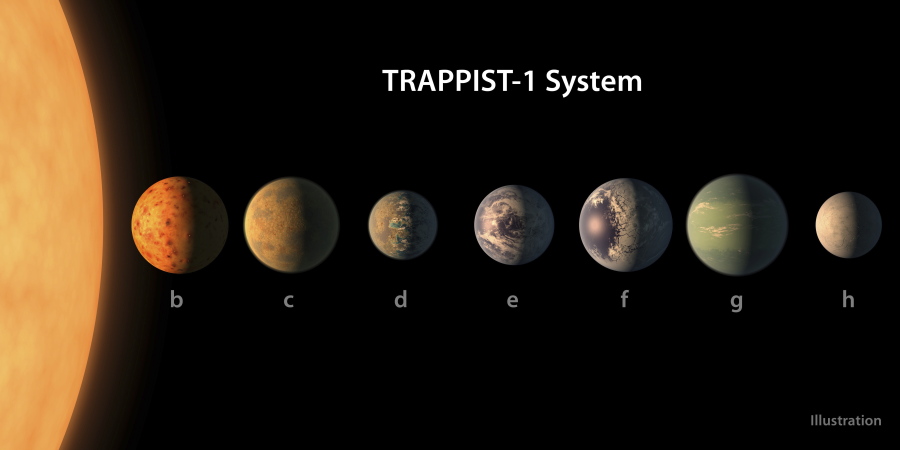CAPE CANAVERAL, Fla. — For the first time, astronomers have discovered seven Earth-size planets orbiting a single nearby star — and these new worlds could hold life.
This cluster of planets is less than 40 light-years away in the constellation Aquarius, according to NASA and the Belgian-led research team who announced the discovery Wednesday.
The planets circle tightly around a dim dwarf star called Trappist-1, barely the size of Jupiter. Three are in the so-called habitable zone, the area around a star where water and, possibly life, might exist. The others are right on the doorstep.
Scientists said they need to study the atmospheres before determining whether these rocky, terrestrial planets could support some sort of life. But it already shows just how many Earth-size planets could be out there — especially in a star’s sweet spot, ripe for extraterrestrial life. The more planets like this, the greater the potential of finding one that’s truly habitable. Until now, only two or three Earth-size planets had been spotted around a star.
“We’ve made a crucial step toward finding if there is life out there,” said the University of Cambridge’s Amaury Triaud, one of the researchers.
The potential for more Earth-size planets in our Milky Way galaxy is mind-boggling. The history of planet-searching shows “when there’s one, there’s more,” said Massachusetts Institute of Technology astrophysicist Sara Seager.
“With this amazing system, we know that there must be many more potentially life-bearing worlds out there just waiting to be found,” she said.
NASA’s Thomas Zurbuchen, associate administrator for the science mission, said the discovery “gives us a hint that finding a second Earth is not just a matter of if, but when,” and addresses the age-old question of “Are we alone out there?”
“We’re making a step forward with this, a leap forward in fact, toward answering that question,” Zurbuchen said at a news conference.
Last spring, the University of Liege’s Michael Gillon and his team reported finding three planets around Trappist-1. Now the count is up to seven, and Gillon said there could be more. Their latest findings appear in the journal Nature.
This crowded yet compact solar system — 235 trillion miles away — is reminiscent of Jupiter and its Galilean moons, according to the researchers.
Picture this: If Trappist-1 were our sun, all seven planets would be inside Mercury’s orbit. Mercury is the innermost planet of our own solar system.



